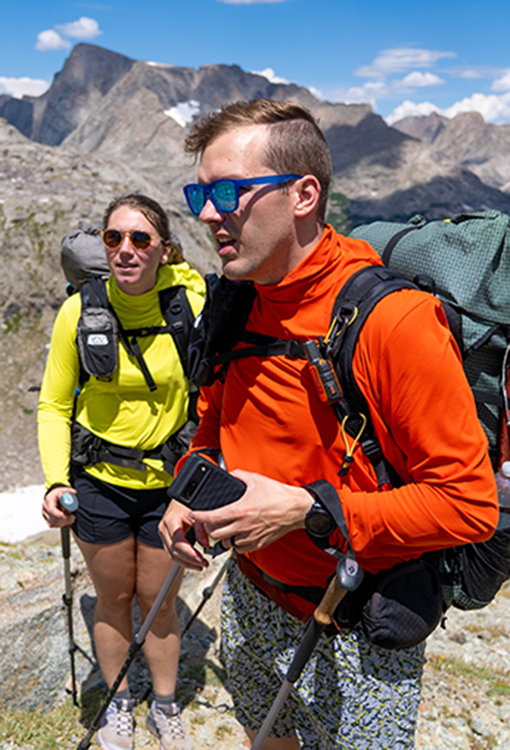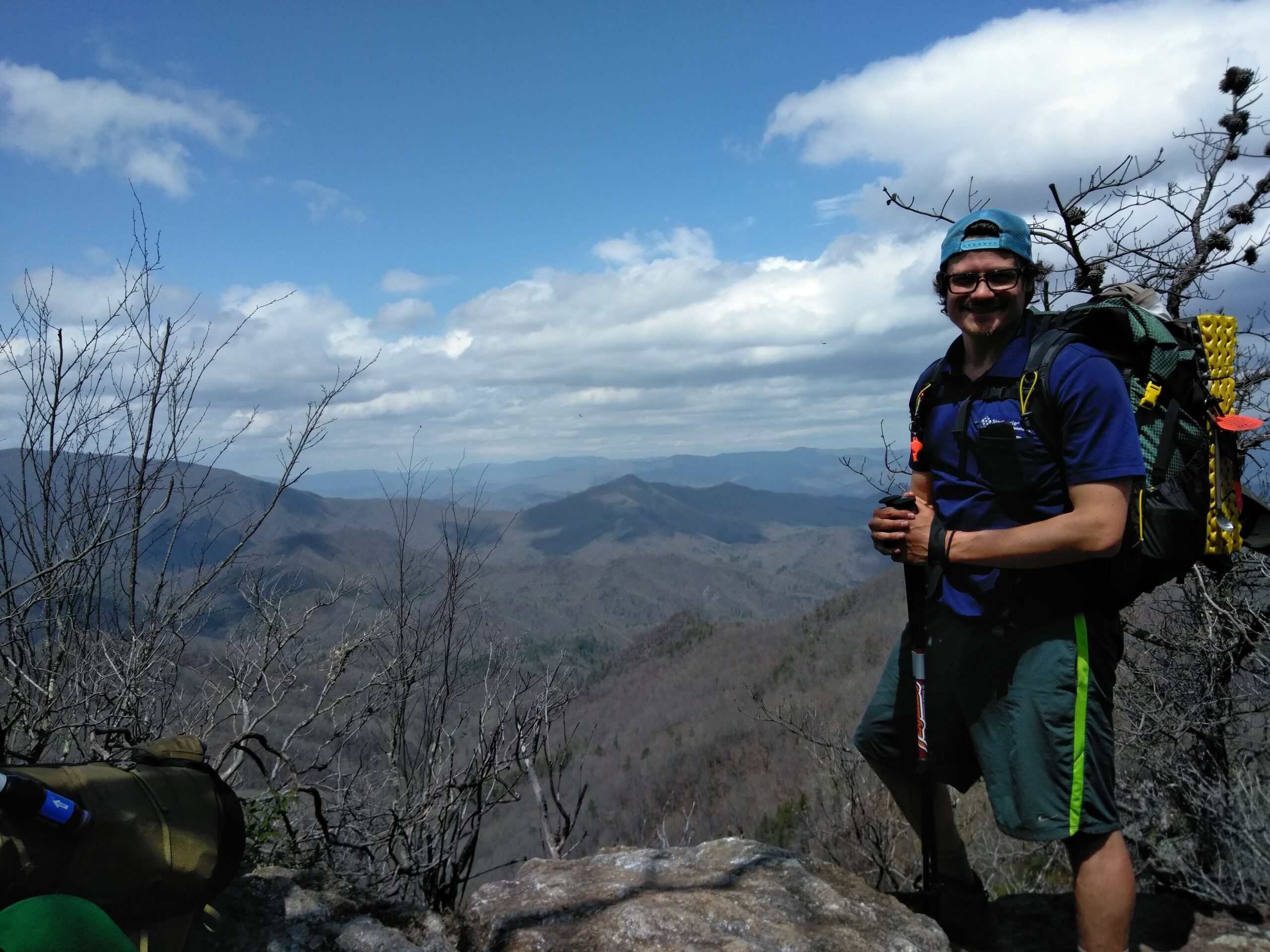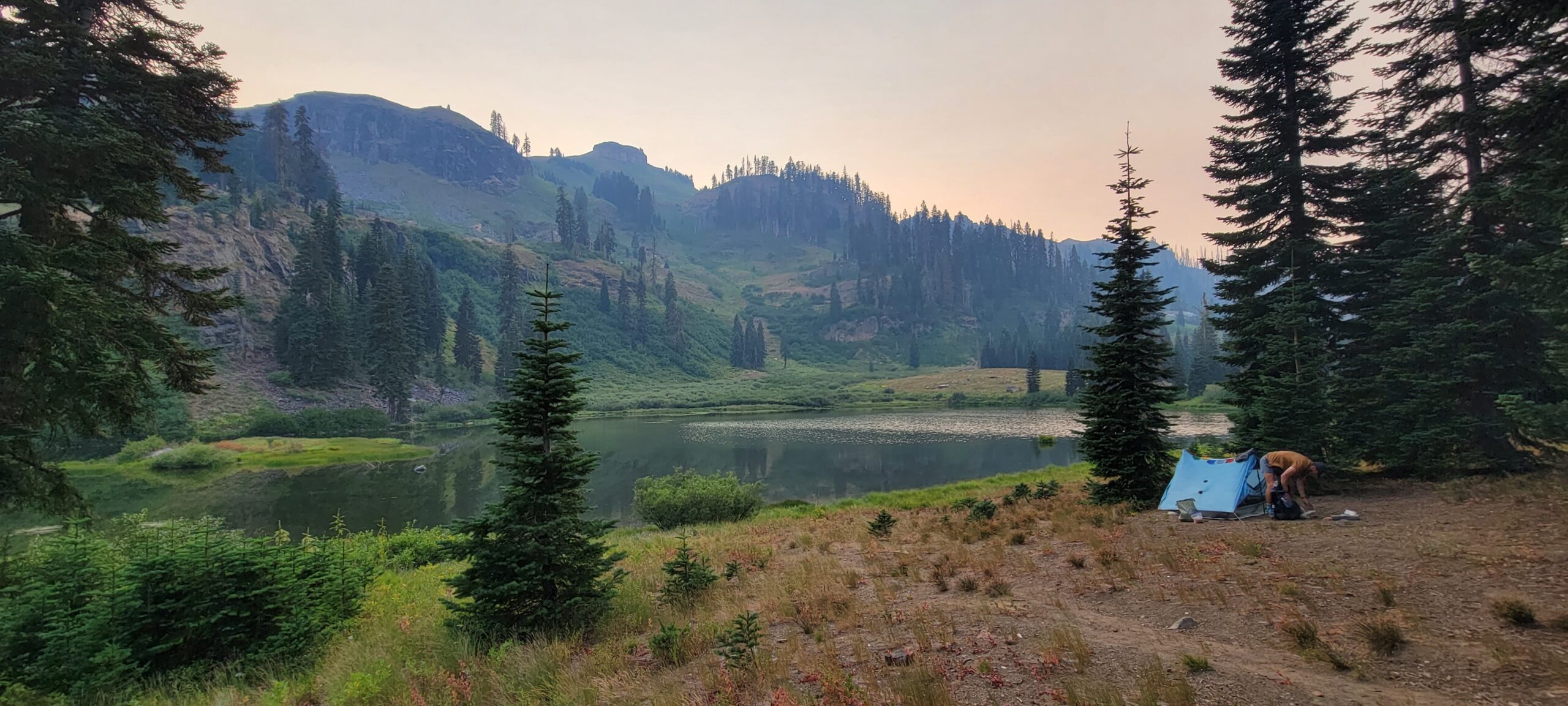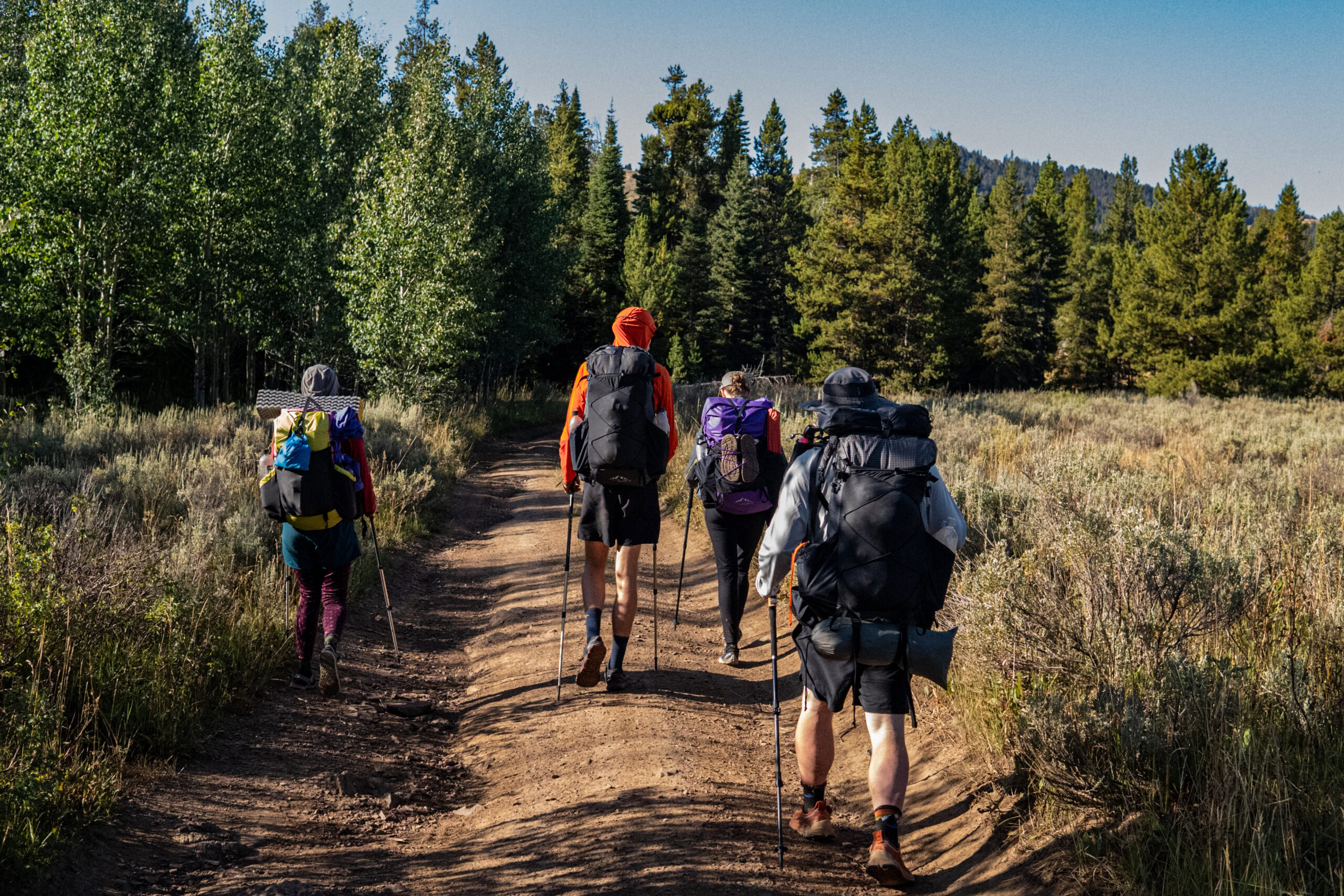
Choosing the Right ULA Backpack for Your Thru-hike
Whether you’re planning your first thru-hike or you’ve already logged thousands of trail miles, one thing remains constant: your backpack matters. It’s your mobile home, your load-bearing lifeline, and one of the most personal pieces of gear you’ll carry. At ULA, we’ve built our reputation on packs that go the distance—from the Appalachian Trail to the Pacific Crest and Continental Divide. While this article mainly focuses on the big 3 trails and thru-hiking, be thinking about the type of gear loadout you have, the types of trips you take, and the mileages between resupplies you’ll have. For example, if you do more desert west hiking with limited water/longer food carries, and you’re not as concerned about using ultralight gear, the Catalyst is a great option.
But with all the options to choose from, how do you know which ULA pack is right for you?
This guide breaks it down.
Why Your Backpack Matters on a Long-Distance Hike
When you’re hiking 2,000+ miles, every ounce counts. But going ultralight shouldn’t mean sacrificing durability or comfort. Your backpack needs to strike the right balance between weight, structure, volume, and versatility. You want something built to last the entire trail (and then some), while adapting to different climates, food carries, and terrain.
Key Features to Consider
Here’s what experienced hikers look for in a thru-hiking pack:
- Weight-to-Comfort Ratio: Ultralight doesn’t mean ultraminimal. Look for packs that reduce base weight without sacrificing suspension or support. This could look like robust framing systems like the twin frame stays of the Catalyst or something more minimal like the Delrin hoop of the Ohm. If you’re considering going frameless, we recommend total pack weights of 20-25 pounds. Base weights are cool and all, but if you’ve got an 8 pound base weight and need to carry 5 days worth of food and 4 liters of water, you’re now at 26 lbs and going to feel the pull of that extra weight.
- Volume: How much space you need depends on your gear, resupply strategy, and trail. Typically for the average thru-hiker a backpack with at least 55L of capacity will handle everything you need to carry. Anything smaller and you’re dwelling into the more experienced backpacker category. When you carry less gear, you need more backcountry skillsets. It’s important to note here that we at ULA use the total volume measurement when talking about the size of our packs while it’s more common for other brands to use only the internal volume to seem smaller and sleeker. The reality of most 50L packs are the market are actually 50L internal plus another 10-15 liters of exterior capacity. So with the 68L Circuit or 48L Circuit SV, those numbers refer to the total capacity of the pack which includes internal and external. We feel that this is the most accurate way to portray the packs and their size capacity. Lately it’s been trendy to have a smaller pack for big updoots on the internet so some brands have positioned themselves and their claimed measurements to accommodate. Keep this in mind as you’re shopping around.
- Load Capacity: Can it comfortably carry a week’s worth of food and water without sagging or shifting? While thru-hiking you’re likely to run into 5-7 days of hiking in between towns and resupply. If you account for 1.5 – 2 lbs of food per day, plus water which weighs 2.2 lbs per liter, you can quickly climb up to 20 lbs of food and water at one time not even including all of your other gear. There was a section on the PCT where we had a full resupply and 5 liters of water, that’s a cool 24 lbs in just consumables, including gear we were pushing 35 pounds. Our load recommendations are based on a comfort rating, not a “before the pack explodes” rating. So when we say the Circuit is good for 35 lbs, we’re talking about it comfortably carrying 35lbs. Could you push it on the occasional long carry? Sure, but be aware that pack components like frame stays could start to bend if you push it too far.
- Durability: Thru-hiking is tough on gear. Choose a pack made from materials that can withstand months of abuse. We back all of our packs by a lifetime guarantee and our Robic packs have been known to last 10,000 miles for thousands of hikers. We only use the best and most reliable materials on the market. Our packs aren’t meant to last just one thru-hike, they’re meant to last you many!
- Custom Fit: Interchangeable hip belts and adjustable torso sizes can make a world of difference. All of our framed packs offer interchangeable hip belts so while you’re making your way down the trail and losing weight, you can swap the hip belt out to ensure your pack continues to fit and carry comfortably. Additionally, the hip belt can move vertically allowing you to adjust the torso size to the perfect fit. You don’t have to worry about being a perfect 18 inch torso, you have some wiggle room to account for those sizes in between.

Appalachian Trail – Circuit SV/Ohm/Nexus
The AT is famous for its “green tunnel” vibe, endless ridgelines, and frequent town stops—but what really sets it apart is how wet it is. From the misty stretches of Georgia and North Carolina all the way through to the White Mountains and Maine, you’re going to encounter a lot of rain, humidity, and mud. That’s why we recommend a more water-resistant material like Ultra, which is a laminated waterproof fabric that sheds water instead of soaking it in. While Ultra itself is waterproof, we don’t seam seal our packs—so a pack liner is still essential. And honestly, regardless of what the marketing says from any brand or material, we always recommend using a liner when you know you’re going to be out in extended wet conditions. It’s the difference between a dry quilt and a very bad night. If you’re using Robic, which is a durable but non-waterproof material, you’ll want to pair a pack liner with a rain cover. Robic’s tough—but it holds water like a sponge if it gets saturated, which just means you’re carrying extra weight. Because you’re in town every 3–5 days on the AT and water is abundant along the trail (think: springs, creeks, and shelters with sources), you won’t need to carry huge volumes of food or water. That makes something like the 48L Circuit SV a great fit. It can still carry a bear canister (if you want the added peace of mind in places like Shenandoah or the Smokies), but it won’t feel oversized once you’re a few hundred miles in and your gear kit is more dialed. The Ohm is another solid choice for hikers with a bit more experience under their belt, and if you’re frameless-curious and traveling light, the 54L CDT or 40L Nexus are excellent options for shaving weight without sacrificing function.

Pacific Crest Trail – Circuit/Catalyst/Nexus
The PCT is a gear-testing gauntlet, stretching from the desert heat of Southern California, through the snowy Sierra Nevada, and on into the volcanic peaks and unpredictable weather of the Pacific Northwest. Your pack has to handle 100-degree days, freezing alpine mornings, and everything in between.
- In the first 700 miles, water carries can be long—sometimes 20+ miles between reliable sources—so water capacity is key. Once you hit the Sierra, the terrain changes fast. Bear canisters are required in most of this section (especially in places like Yosemite and Kings Canyon), and in high snow years you might need to carry microspikes, an ice axe, or even posthole through late-season snowpack. Once you cross into Northern California, Oregon, and Washington, the trail smooths out a bit in terms of terrain, but you’ll want to be ready for rain, mosquitoes, and fire reroutes.
- Because of all that, the Circuit or Catalyst are our go-to recommendations. Both comfortably fit a BV500 bear canister inside the main body of the pack and have enough room for long food carries. If your kit is more dialed, the Circuit SV is a perfect middle ground—it’s robust enough to handle alpine conditions but small enough to feel nimble during the long dry stretches.
- If you’re trying to push the limits and go light, we salute the special freaks out there rocking 35–40 liter packs on the whole thing. If you’re trying to get your freak on, the Nexus fits a BV500 vertically inside the pack or strapped securely to the top via the sewn-in Y-strap, which keeps things clean and compact.
- No matter what material you choose—Ultra or Robic—we still always recommend a pack liner. The desert has fewer issues with moisture, but by the time you’re in Washington, you’re going to be glad you kept your insulation dry.

Continental Divide Trail – Catalyst/Circuit/CDT
The CDT is a choose-your-own-adventure kind of trail—less a single route and more a network of options depending on snowpack, timing, and how Type 2 you like your fun. You’ll deal with everything from hot desert miles in New Mexico to legit alpine terrain in Colorado and Montana, so your kit has to be flexible and capable. Water carries can be long, especially early on, and snow gear like microspikes or an ice axe might be necessary depending on your timing through the San Juans. A bear canister isn’t officially required in most sections, but some folks still opt to carry one through grizzly territory up north for peace of mind. Given the sheer variability of conditions, the Circuit or Catalyst are our go-to recommendations for the CDT. These provide the capacity for bigger carries when needed—like food hauls through remote sections or strapping on snow gear—but it still feels streamlined when your kit is lighter. If you’re leaning toward a more minimalist setup and going stoveless or ultralight, the Nexus can absolutely make it work, especially if you’re used to managing your volume. Just make sure your comfort and safety margin is where it needs to be—it’s a wild trail out there. As far as materials go, Ultra is a strong contender again, especially with the range of conditions you’ll hit. Afternoon thunderstorms, unexpected snow, and full days in the sun all come with the territory. Like we always say though, use a pack liner. No matter the material or brand, a liner is the insurance policy that keeps your down quilt dry when everything else is soaked.
Weekend Warriors/Casual Backpackers
Not everyone’s dropping everything to thru-hike 2,000+ miles—and honestly, some of our favorite trail memories come from quick weekend overnights, long day hikes, or that 3-day loop you hit every summer with friends. If you’re a weekend warrior, your priorities are probably a little different: less food and water weight, more flexibility, and a pack that doesn’t feel overkill for a casual getaway—but still delivers when you want to push things a bit harder.
-
- If you’re carrying a fairly traditional kit with a stove, a cozy quilt or sleeping bag, and a full shelter, the Circuit SV hits the sweet spot. It gives you enough room for creature comforts without being bulky, and it’s great if you want one pack that can scale up for longer trips too. If you’re running a lighter setup—say a fast-and-light tarp, a trimmed-down sleep system, and compact food storage—the Nexus or Ohm are excellent for dialing in weight without sacrificing capability.
-
- Material-wise, Robic is plenty tough for weekend use and most trail conditions, but if you often hike in rainy climates (looking at you, Pacific Northwest and Smoky Mountains), the Ultra fabric might be worth the upgrade for its water-shedding properties. Either way, we still recommend using a pack liner—because wet gear ruins good weekends, and it’s a cheap, lightweight insurance policy that always pays off.
-
- At the end of the day, your gear should enable fun—not get in the way of it. Whether you’re out to recharge in the woods, test some new gear, or just catch a sunset from your favorite overlook, our lineup has something that’ll help you carry better and hike your own hike—even if it’s just for the weekend.
Final Thoughts
Choosing a pack is personal—and it should be. That’s why every ULA pack is made to order in Logan, Utah. We build gear for hikers who go far, go light, and don’t cut corners when it comes to comfort or reliability


0 Comments